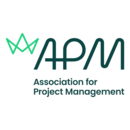Risk management expectations in projects
The foundation of a project: How do you set a project off on the right track?
Projects are happening all the time across the world. Delivering any project successfully – regardless of size, cost or nature – means it must be built with the right foundation. Effective risk management plays an important part and is necessary for a successful project.
Estelle Detrembleur is Associate Director at Mace, with over 20 years’ experience working with project-driving initiatives; predominantly within the area of environment and technology.
We spoke with her about some of the most important considerations when attempting to manage risk at the start of a project:
What are the risk management expectations?
Client and stakeholders’ expectations need to be considered as early as possible in the project management life cycle. Risk management expectations depend on the complexity of the project as well as the level of risk management requirements for the project. Consider whether this affects governance and the management plans (i.e. do you need a risk executive committee or other committees to assist in reviewing the risks on the projects), as well as how often risks are reviewed at what level and how they are reported.
What do you know about risk and is there capability within the team?
Establish the risk culture from top down and bottom up and train your team to have a risk management approach. Risk management is not for everyone, so find those that like it.
Do you have the resources?
As risk management matures throughout the project, skill set and resources evolve. Prepare a resource plan against the schedule. Develop a training programme and find a risk champion to support team members during the delivery of the programme.
What are the project objectives, risk appetite and tolerance?
The objectives of the project or programme are linked with the three main project risk types: cost, schedule and performance. When talking about risk appetite and tolerance, it’s important to understand the amount of risk the project or programme is willing to accept to achieve its objectives; this is the risk appetite. The risk tolerance is the acceptable deviation from the project or programme risk appetite.
Project professionals need to manage risk considerations at the beginning to support the project plans and objectives, such as understanding the risk management principles and processes.
Further Information
Estelle is a committee member of APM’s Specific Interest Group (SIG) on Risk and is also an accredited Risk Practitioner through APM. If risk management is your specialism or an area you’d like to learn more about, you can follow or volunteer with APM’s Risk SIG.
You can read about the different categories of risk management, the risk processes and access additional risk resources on APM’s What is risk management? page.
This article first appeared on the APM news and blog as "The foundation of a project: How do you set a project off on the right track?' on August 24, 2022.
--Association for Project Management
Related articles on Designing Buildings
- APM articles.
- Contingency plan.
- Design risk management.
- Interface risk in construction.
- Non-technical risk.
- Principles of prevention.
- Project risks and programme risks.
- Retained risk.
- Risk assessments and method statements.
- Risk assessment.
- Risk feedback.
- Risk mapping.
- Risk management
- Risk management in building design and construction.
- Risk register.
Featured articles and news
Amendment to the GB Energy Bill welcomed by ECA
Move prevents nationally-owned energy company from investing in solar panels produced by modern slavery.
Gregor Harvie argues that AI is state-sanctioned theft of IP.
Heat pumps, vehicle chargers and heating appliances must be sold with smart functionality.
Experimental AI housing target help for councils
Experimental AI could help councils meet housing targets by digitising records.
New-style degrees set for reformed ARB accreditation
Following the ARB Tomorrow's Architects competency outcomes for Architects.
BSRIA Occupant Wellbeing survey BOW
Occupant satisfaction and wellbeing tool inc. physical environment, indoor facilities, functionality and accessibility.
Preserving, waterproofing and decorating buildings.
Many resources for visitors aswell as new features for members.
Using technology to empower communities
The Community data platform; capturing the DNA of a place and fostering participation, for better design.
Heat pump and wind turbine sound calculations for PDRs
MCS publish updated sound calculation standards for permitted development installations.
Homes England creates largest housing-led site in the North
Successful, 34 hectare land acquisition with the residential allocation now completed.
Scottish apprenticeship training proposals
General support although better accountability and transparency is sought.
The history of building regulations
A story of belated action in response to crisis.
Moisture, fire safety and emerging trends in living walls
How wet is your wall?
Current policy explained and newly published consultation by the UK and Welsh Governments.
British architecture 1919–39. Book review.
Conservation of listed prefabs in Moseley.
Energy industry calls for urgent reform.



























Comments